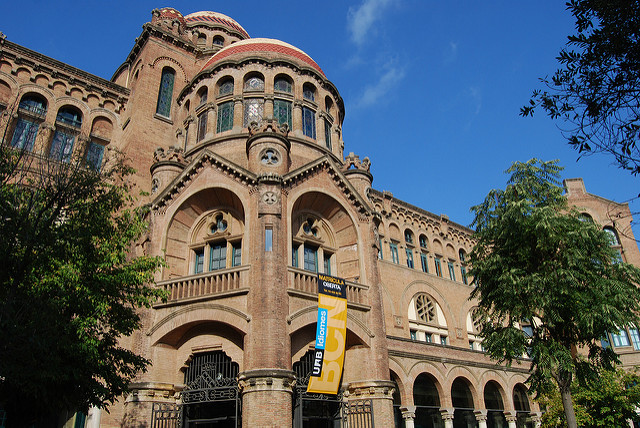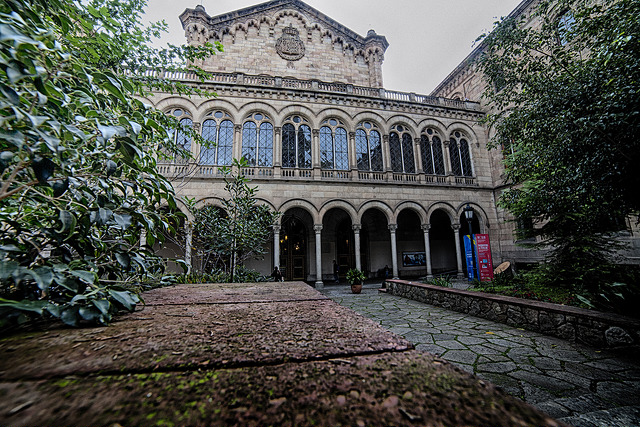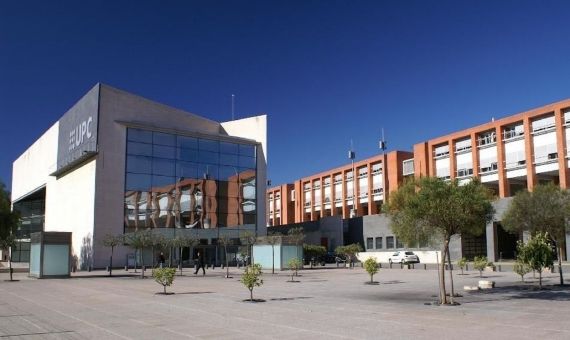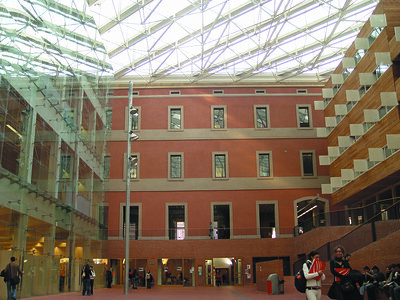Partner Institutions
The CASA Barcelona program provides you with an unmatched opportunity to hone your Spanish skills while studying alongside local students at four leading institutions of higher learning in the city:
 Founded in 1968, the UAB is a campus-based institution located 25 km north of Barcelona. It is home to approximately 40,000 students, taking both undergraduate and graduate courses at its 30 schools and colleges. The UAB offers 105 undergraduate programs, and is a particularly good option if you are interested in disciplines such as education, linguistics, geography, modern languages, sociology, political sciences and international relations. Among the services this university offers is its volunteering program, open to all program students. Due to its distance from the city center, the program subsidizes public transport costs, if you choose to study at the UAB.
Founded in 1968, the UAB is a campus-based institution located 25 km north of Barcelona. It is home to approximately 40,000 students, taking both undergraduate and graduate courses at its 30 schools and colleges. The UAB offers 105 undergraduate programs, and is a particularly good option if you are interested in disciplines such as education, linguistics, geography, modern languages, sociology, political sciences and international relations. Among the services this university offers is its volunteering program, open to all program students. Due to its distance from the city center, the program subsidizes public transport costs, if you choose to study at the UAB.
 The city’s oldest university, the UB dates back to 1450, although the first inception of the university was established as a School of Medicine in 1401. Work on the current historic building was started in 1863, and this is the emblematic building that today houses the rectorate, Faculty of Mathematics and Faculty of Philology and can be found at Plaça Universitat, near the CASA Barcelona offices.
The city’s oldest university, the UB dates back to 1450, although the first inception of the university was established as a School of Medicine in 1401. Work on the current historic building was started in 1863, and this is the emblematic building that today houses the rectorate, Faculty of Mathematics and Faculty of Philology and can be found at Plaça Universitat, near the CASA Barcelona offices.
With almost 80,000 students, it’s one of the biggest universities in Spain. Its urban campus is spread around the city and well-connected by public transport. The 30 schools and faculties offer 74 undergraduate programs with studies in history, psychology, economics, philosophy and philology consistently ranked highly. A prominent research university, some students intern with UB research groups as part of the program’s Pro Seminar course.
 The UPC was founded in 1971 through the merger of several engineering and architecture schools. It has 25 schools located around Catalonia catering to over 30,000 students. If you wish to pursue technical subjects, the UPC offers 68 undergraduate degrees and specializes in STEM disciplines such as architecture, all types of engineering and computer sciences. Students take courses at the Campus Nord in the University Zone area of the city, which is well-connected by Barcelona’s public transport network.
The UPC was founded in 1971 through the merger of several engineering and architecture schools. It has 25 schools located around Catalonia catering to over 30,000 students. If you wish to pursue technical subjects, the UPC offers 68 undergraduate degrees and specializes in STEM disciplines such as architecture, all types of engineering and computer sciences. Students take courses at the Campus Nord in the University Zone area of the city, which is well-connected by Barcelona’s public transport network.
 The UPF was founded in 1990 by the Autonomous Government of Catalonia. It is an urban campus spread over three main areas of the city, all within easy reach of the students halls of residence. It is the smallest of the four institutions, and its 7 schools offering 22 undergraduate degrees cater to approximately 10,000 students. The UPF is of particular interest if you wish to pursue courses in economics, comparative literature or political sciences. Unlike the other partner universities, UPF courses are organized into trimesters, and are open to fall and academic year students. Due to calendar restraints, the UPF is not an option if you are a spring-only student.
The UPF was founded in 1990 by the Autonomous Government of Catalonia. It is an urban campus spread over three main areas of the city, all within easy reach of the students halls of residence. It is the smallest of the four institutions, and its 7 schools offering 22 undergraduate degrees cater to approximately 10,000 students. The UPF is of particular interest if you wish to pursue courses in economics, comparative literature or political sciences. Unlike the other partner universities, UPF courses are organized into trimesters, and are open to fall and academic year students. Due to calendar restraints, the UPF is not an option if you are a spring-only student.











